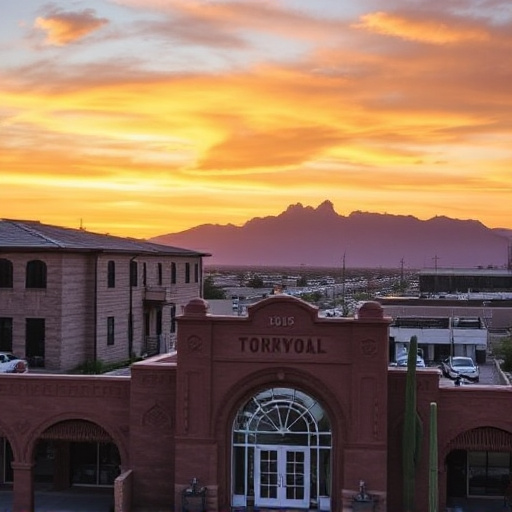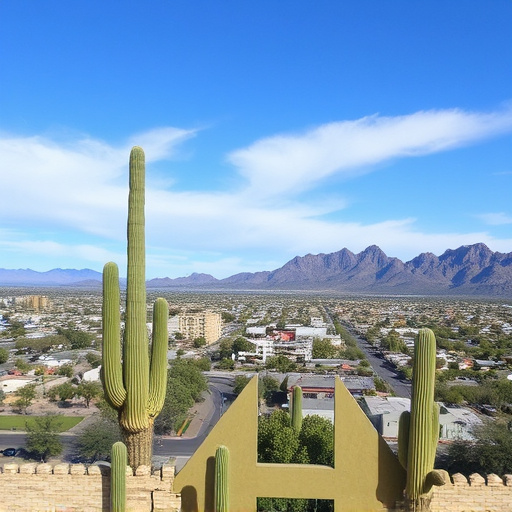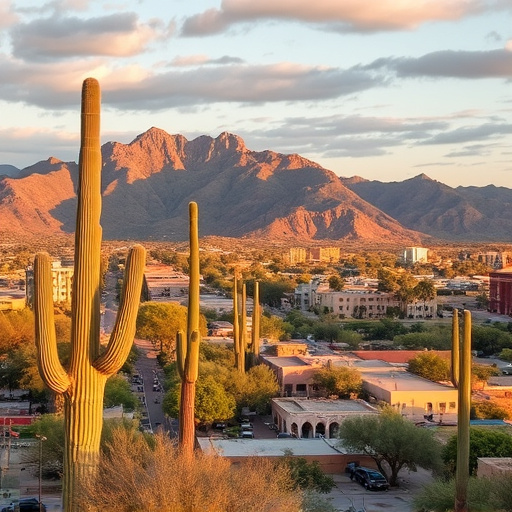Southwest Gas Pipeline easements significantly impact development potential in Tucson Real Estate by granting construction and operational rights on private properties, affecting property values and future plans. These restrictions shape building designs, land use dynamics, and investment strategies for developers and homeowners alike. Understanding these changes is vital for navigating Tucson's evolving real estate market, as strategic management of pipeline easements opens doors to innovative developments while ensuring safety and collaboration with utility companies. The future of Tucson Real Estate hinges on integrating energy infrastructure into smart cities, aligning with the transition to cleaner sources and reshaping urban planning for mixed-use developments.
In the dynamic landscape of Tucson real estate, the expansion of Southwest gas pipelines has significantly modified development potential for parcel investors. This article delves into the complex interplay between pipeline easements and land use, offering an in-depth guide for local real estate investors. We explore how these infrastructural developments impact property values, navigate regulatory changes, and present case studies showcasing successful projects near gas pipelines. Understanding these trends is crucial for investors aiming to capitalize on Tucson’s evolving real estate market.
- Understanding Southwest Gas Pipeline Easements: An Overview for Tucson Real Estate Investors
- The Impact of Pipeline Infrastructure on Land Use and Development
- Navigating Regulatory Changes: Obtaining Easements for Parcel Development
- Assessing the Potential: How Pipelines Affect Property Values in Tucson
- Case Studies: Successful Parcel Developments Near Gas Pipelines
- Future Trends: The Evolving Landscape of Real Estate and Energy Infrastructure
Understanding Southwest Gas Pipeline Easements: An Overview for Tucson Real Estate Investors

Southwest Gas Pipeline easements play a significant role in shaping the development potential of parcels in Tucson, impacting real estate investments and strategies. These easements grant the Southwest Gas Corporation rights to construct, operate, and maintain gas pipelines on private properties. Understanding these easements is crucial for Tucson Real Estate Investors as they can significantly influence property values and future development plans.
For investors, it’s essential to recognize that while pipeline easements bring infrastructure benefits to the community, they also impose restrictions. These may include limited access to the land, specific construction requirements, and ongoing operational considerations. By thoroughly evaluating the scope and terms of these easements, investors can make informed decisions about parcel acquisition, development projects, and potential returns on Tucson Real Estate investments.
The Impact of Pipeline Infrastructure on Land Use and Development

The construction of a Southwest gas pipeline significantly alters the landscape of land use and development, particularly in areas like Tucson Real Estate. The physical presence of such infrastructure imposes constraints on building designs and layouts. Developers must carefully consider the placement of homes, businesses, and other structures to accommodate the pipeline’s right-of-way, ensuring safe distances are maintained. This careful navigation around the pipeline ensures both the safety of residents and the integrity of the energy network.
Furthermore, the presence of a gas pipeline can either enhance or limit the development potential of parcels. In some cases, areas near pipelines may become less desirable for certain types of construction due to environmental considerations or regulatory restrictions. Conversely, pipelines can open up new opportunities for strategic land development, especially in industries requiring reliable energy infrastructure. Understanding these dynamics is crucial for both developers and homeowners looking to navigate the ever-changing landscape of Tucson Real Estate.
Navigating Regulatory Changes: Obtaining Easements for Parcel Development

Navigating Regulatory Changes plays a pivotal role in understanding the potential for parcel development in Tucson Real Estate. With the introduction of Southwest gas pipeline easements, developers and land owners must adapt to new constraints. The process begins with meticulous planning and understanding of these regulatory changes, as obtaining easements becomes a crucial step in unlocking a property’s development potential.
In Tucson, this involves engaging with local authorities and pipeline companies to secure the necessary permissions. Developers need to carefully consider the impact of these easements on their projects, ensuring compliance while exploring creative solutions that mitigate any restrictions. This navigation is essential for maximizing the development opportunities that still exist within the changing landscape of Tucson Real Estate.
Assessing the Potential: How Pipelines Affect Property Values in Tucson

In Tucson, the potential for property development is a crucial aspect of the local real estate market, and it’s heavily influenced by infrastructure projects like gas pipelines. When new pipeline easements are acquired, it has a significant impact on the area’s residential and commercial properties. Assessing this potential involves understanding how these easements modify development plans and subsequently affect property values.
Pipeline construction requires specific rights-of-way, which can limit or alter traditional land use. In Tucson Real Estate, this may result in reduced developable space for homeowners and developers alike. Properties bordering or near pipeline routes might experience a decrease in value due to the constraints on future construction and the potential for noise, traffic, or aesthetic disruptions. Conversely, certain areas could see increased values if they become more desirable locations with improved access to energy infrastructure.
Case Studies: Successful Parcel Developments Near Gas Pipelines

In the vibrant landscape of Tucson Real Estate, the presence of gas pipelines has both challenges and opportunities for developers. Case studies of successful parcel developments near such infrastructure offer valuable insights into maximizing potential. For instance, in areas where pipeline easements are strategically managed, thoughtful urban planning can create harmonious co-existence. Developers have successfully transformed these sites into mixed-use communities, combining residential, commercial, and recreational spaces.
These projects demonstrate that with careful consideration, the development potential within close proximity to gas pipelines can be realized. By working collaboratively with utility companies and adhering to safety regulations, developers in Tucson have been able to create thriving environments that enhance local economies and improve quality of life for residents, ensuring a harmonious balance between infrastructure needs and community growth.
Future Trends: The Evolving Landscape of Real Estate and Energy Infrastructure

The future of real estate development in areas like Tucson is increasingly intertwined with energy infrastructure evolution, particularly as we navigate an era marked by rising energy demands and a transition to cleaner sources. The expansion of renewable energy projects, such as solar farms and wind turbines, has already begun to reshape landscapes and open up new opportunities for sustainable development. Additionally, the ongoing digital revolution is enhancing the efficiency of energy networks through smart grid technologies, which can influence urban planning and property values.
As seen with the Southwest gas pipeline easements, infrastructure projects must adapt to changing times. The way these developments are integrated into the local environment and communities will be crucial for maintaining Tucson’s real estate potential. Future trends suggest a need for more innovative approaches, where energy infrastructure becomes an integral part of smart cities, offering opportunities for mixed-use developments that combine residential, commercial, and green spaces.
The Southwest gas pipeline easements significantly shape the development potential of parcels in Tucson, impacting both land use and property values. Understanding these regulatory changes is crucial for real estate investors looking to navigate the evolving landscape of Tucson’s real estate market. By assessing the effects of pipeline infrastructure and learning from successful case studies, developers can strategically position themselves to capitalize on emerging opportunities in this dynamic environment, ensuring a robust and sustainable future for Tucson’s property market.
